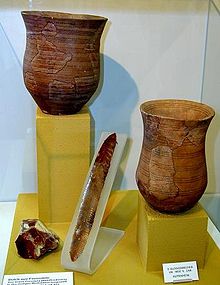
Back علم الآثار الثقافي التاريخي Arabic Kulturhistorische Archäologie German Kultuurilooline arheoloogia Estonian Archeologia storico-culturale Italian Kulturhistorisk arkeologi NB Arqueologia histórico-cultural Portuguese Культурно-историческая археология Russian Културно-историјска археологија Serbian Kulturhistorisk arkeologi Swedish Kültürtarihsel arkeoloji Turkish

Culture-historical archaeology is an archaeological theory that emphasises defining historical societies into distinct ethnic and cultural groupings according to their material culture.
It originated in the late nineteenth century as cultural evolutionism began to fall out of favor with many antiquarians and archaeologists. It was gradually superseded in the mid-twentieth century by processual archaeology. Cultural-historical archaeology had in many cases been influenced by a nationalist political agenda, being utilised to prove a direct cultural and/or ethnic link from prehistoric and ancient peoples to modern nation-states, something that has in many respects been disproved by later research and archaeological evidence.
First developing in Germany among those archaeologists surrounding Rudolf Virchow, culture-historical ideas would later be popularised by Gustaf Kossinna. Culture-historical thought would be introduced to British archaeology by the Australian archaeologist V. Gordon Childe in the late 1920s. In the United Kingdom and United States, culture-history came to be supplanted as the dominant theoretical paradigm in archaeology during the 1960s, with the rise of processual archaeology. Nevertheless, elsewhere in the world, culture-historical ideas continue to dominate.
© MMXXIII Rich X Search. We shall prevail. All rights reserved. Rich X Search